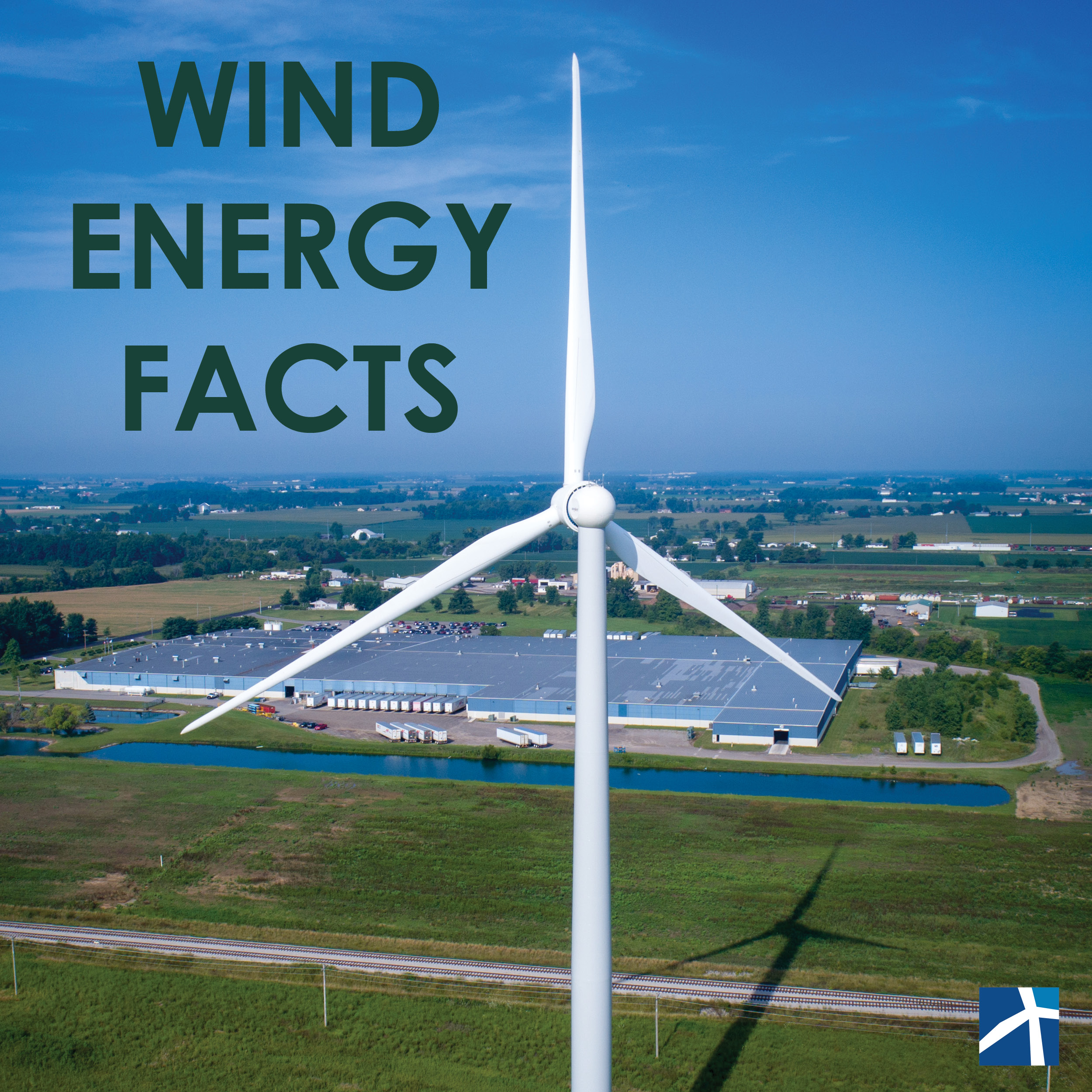SITE PATH
ONE ENERGY FEED

SUBSCRIBE
CONNECT WITH US
News Filters

Through our Megawatt Scholarship program, One Energy and participating customers award $5,000 per turbine per year to local students pursuing 2- or 4-year degrees in science, technology, engineering, and math (STEM) fields. And with the amount of projects we’ve installed, that’s a lot of scholarship money to keep track of!
Help us track these funds for this week’s Wind Study homework! 🔗 Download the questions here and check back Friday for the answer.
You can also find this educational series on Facebook and Twitter.
For more information on Megawatt Scholarships, head to www.megawattscholarships.org.
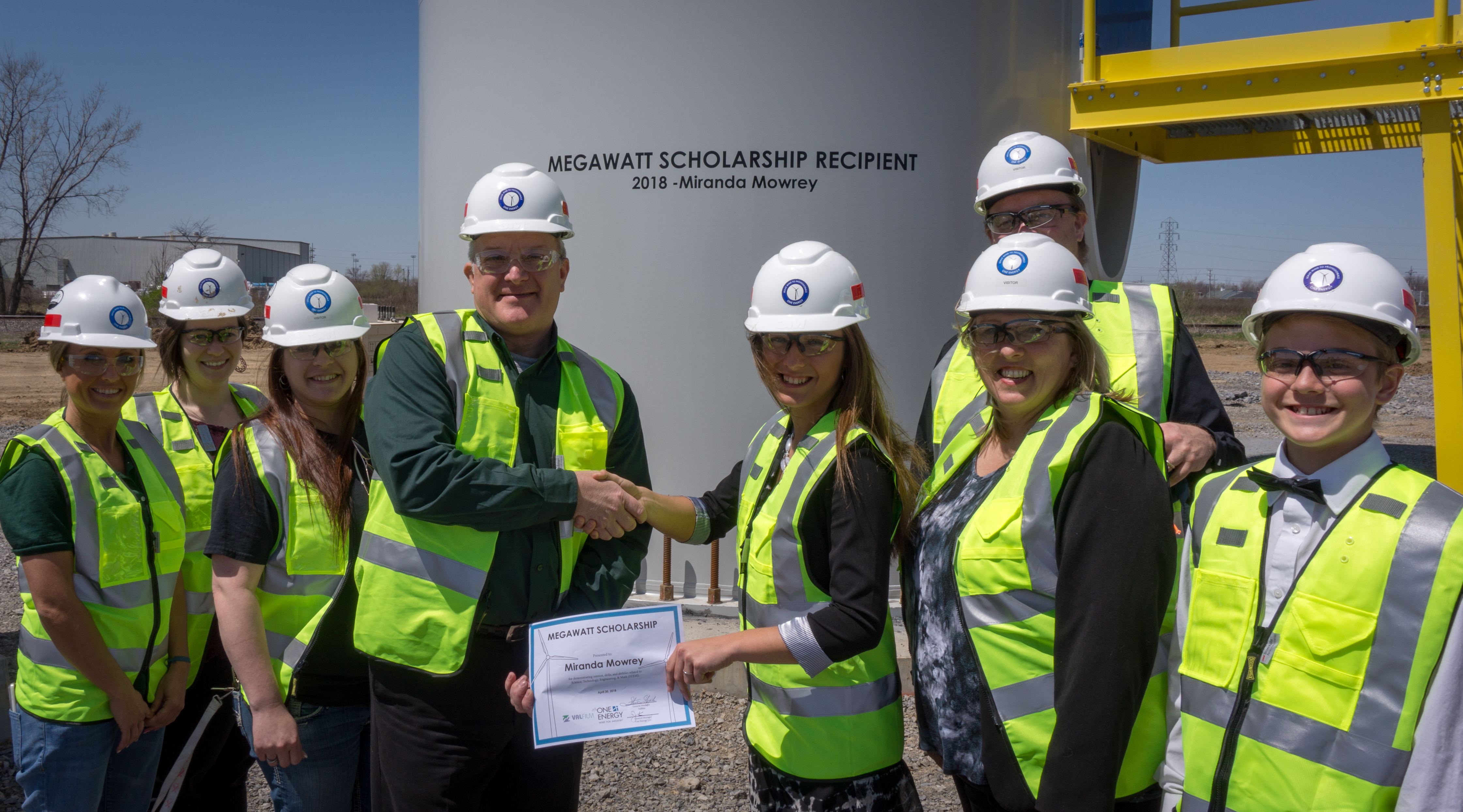

One Energy collects information about wind in order to properly build and operate wind projects – but just how is this information collected?
Last Science Shorts, Project Engineer Ben introduced you to the North Findlay Wind Campus weather station and MET Pole, which use wind instrumentation to measure weather and climate data. Now, Head of Project Planning and Technology Jessica is taking a deep dive into how some of these tools actually work!
In this episode, Jessica is focusing on anemometers, which allow One Energy to measure the most important data we collect: wind speed data!
Watch and learn as Jessica covers both cup anemometers and sonic anemometers – their functions, uses, differences, and related equations. Then come back for the next Science Short to learn about the third instrument we use: LiDAR units!
Subscribe to our YouTube channel and don’t miss any future Science Shorts!
And be sure to share this educational series on Facebook and Instagram!

Are you cut out to work for a wind turbine manufacturer? Find out in today’s Wind Study answer!
On Monday, we asked you to play the role of turbine manufacturer and calculate the power curve of a wind turbine. If you arrived at the correct answer, we could use your work to plan this hypothetical wind energy project!
🔗Download the homework answer here and see if this is a career path you should consider.
You can also find this educational series on Facebook and Twitter.
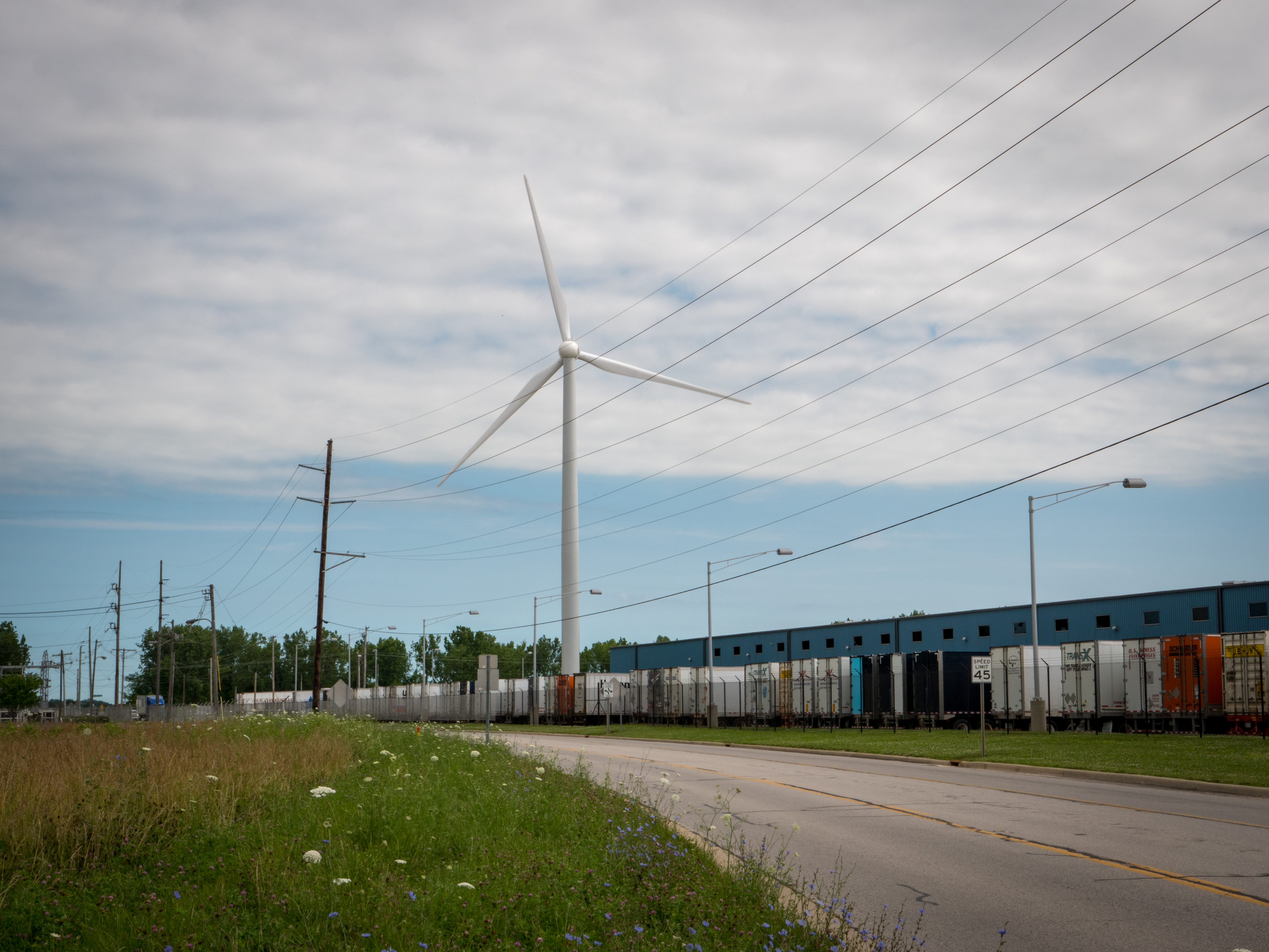

There is a phrase that resounds across the construction industry: “good help is hard to find.” The world has become more automated, more focused on technology, and less dependent on hands-on work. It’s only natural that the workforce has likewise gravitated away from skilled labor and moved towards technology-based educations. As the divide between skilled laborers and engineers increases, expertise suffers within the industry. Tensions are created between skilled labor and engineering disciplines, often causing a dysfunctional self-perform construction team. So, the million-dollar question is, how can this gap be bridged?
Individuals who want to work outside, who enjoy working with their hands, and who are not interested in what college may offer (including the associated costs), may choose to get a jump start on their career. Whether they decide to join an apprenticeship or find a job right out of high school, these individuals immediately make an income and gain relevant field experience. They learn practical applications for the entirety of their career, but they don’t always have a strong background in the fundamental engineering principles upon which construction is based.
On the other hand, individuals electing to go the academia route often learn about complex concepts and theoretical applications for field practices. When it is time to graduate, very few of these students have gained hands-on construction experience, but they walk away with a college degree and proof that they can understand complex principles. Often these students are saddled with a choice between finding work as an engineer or as a manager, developing people and projects. Either choice immediately places them in a sophisticated role within a company.
The paradoxical relationship that is shared between skilled laborers and engineers in construction creates room for animosity to build. They must work together seamlessly but are treated differently. In an ideal world, both groups would be cross-trained and would work together as a team.
Here at One Energy, we have cross-trained many of our skilled laborers and engineers to share duties and responsibilities. Here are some of our suggestions to start mending the gap for a self-perform construction team:
- Create ways to cross-train – One Energy rotates engineers through different departments of the company. One of the longest rotations is participating in 1-2 project lifecycles as a technician within a construction team. One Energy also regularly puts together engineering-based trainings for technicians, which teach conceptual theories.
- Encourage team camaraderie – a technician and an engineer are on the same team. A victory is never about the person or even the role, but rather the team.
- Create an environment for team building – getting to know the people you work with is something undervalued in the working world. Ensuring that work is a collaborative safe place where team members can work together will promote opportunity from within your business. Hold regular all-hands meetings, after work events, celebrations for company wins and individual successes to promote the team.
- Get out of the comfort zone – Technicians should participate in solving engineering problems and engineers should be trained on tools and equipment. Knowing what it is like on either end of the spectrum is invaluable to developing future leadership.
- Treat both roles the same – If a new engineer joins the team, their day starts and ends at the same time as a technician. If there is a new technician, ensure that they too will be trained on computer-based technology.
- Get (and give) feedback regularly – there can be a lot of emotions when it comes to someone’s career and personal growth. Be sure the lines of communication are open to talk through the program, and things that are (and are not) working well.
- Promote fairly and honestly, based on value to the company – this is perhaps the biggest takeaway. Some skills are more valuable than others, depending on the business model. Recognize what those skills are and monetize them effectively.
- Incentivize employees with equity – employee-owned businesses engage team members and encourage success for the business, rather than the individual. This is a great way to navigate potential silos within a business.
- TRAIN! Prepare your team to solve the unknown problem.
With a more cross-functional team, expertise develops organically. To have a skilled laborer that understands engineering fundamentals or an engineer with the ability to perform hands-on work creates an extremely resilient workplace.
While it may be true that “good help is hard to find,” it is not impossible to develop your own team of experts.
Chelsea Bumb is the Head of Construction at One Energy.

Safety is more than just following the rules. As One Energy CEO Jereme Kent explains, many construction companies experience common safety issues in the field because “it’s the system that’s broken.”
In today’s Safety Minute, Jereme introduces a new series exploring common safety problems in wind energy construction. At One Energy, we believe the first line of safety is engineering controls – and we’ll share how One Energy has put this belief into practice, to address known safety risks before employees head to the field.
In future episodes, we’ll take a deeper dive into the most common safety issues, sharing One Energy’s approach to fixing systems that has failed field teams in the past. Together, we can make the field – and the wind industry – safer from the ground up.
Watch the video below, and be sure to subscribe to our YouTube channel so you don’t miss a minute.

Attaching the rotor (hub + three blades) to the generator during wind turbine construction involves special crane rigging that allows the assembly to be lifted and guided mid-air.
Throughout this process, which we call the rotor fly, the rotor pivots mid-air and is raised up and over the top of the tower, where it will then be aligned with the generator and bolted into place.
As you can see in this photo, one blade is behind the tower, on the opposite side of the generator, where the rotor will eventually attach. Getting it to the correct side is where special maneuvering comes into play – as the rotor is lifted above the whole structure, shifted forward, and lowered to the proper height. Taglines work with the crane and tower crew to align the rotor and control the load during the pick.
At this point, it’s ready to be “caught” or guided into place with the help of technicians up-tower, who will complete the bolting. The use of alignment pins also helps ensure the rotor is installed correctly and safely.
This carefully coordinated procedure marks the final step of wind turbine erection!
To make sure you don’t miss this upcoming feature, follow us on Twitter, Facebook, and Instagram!
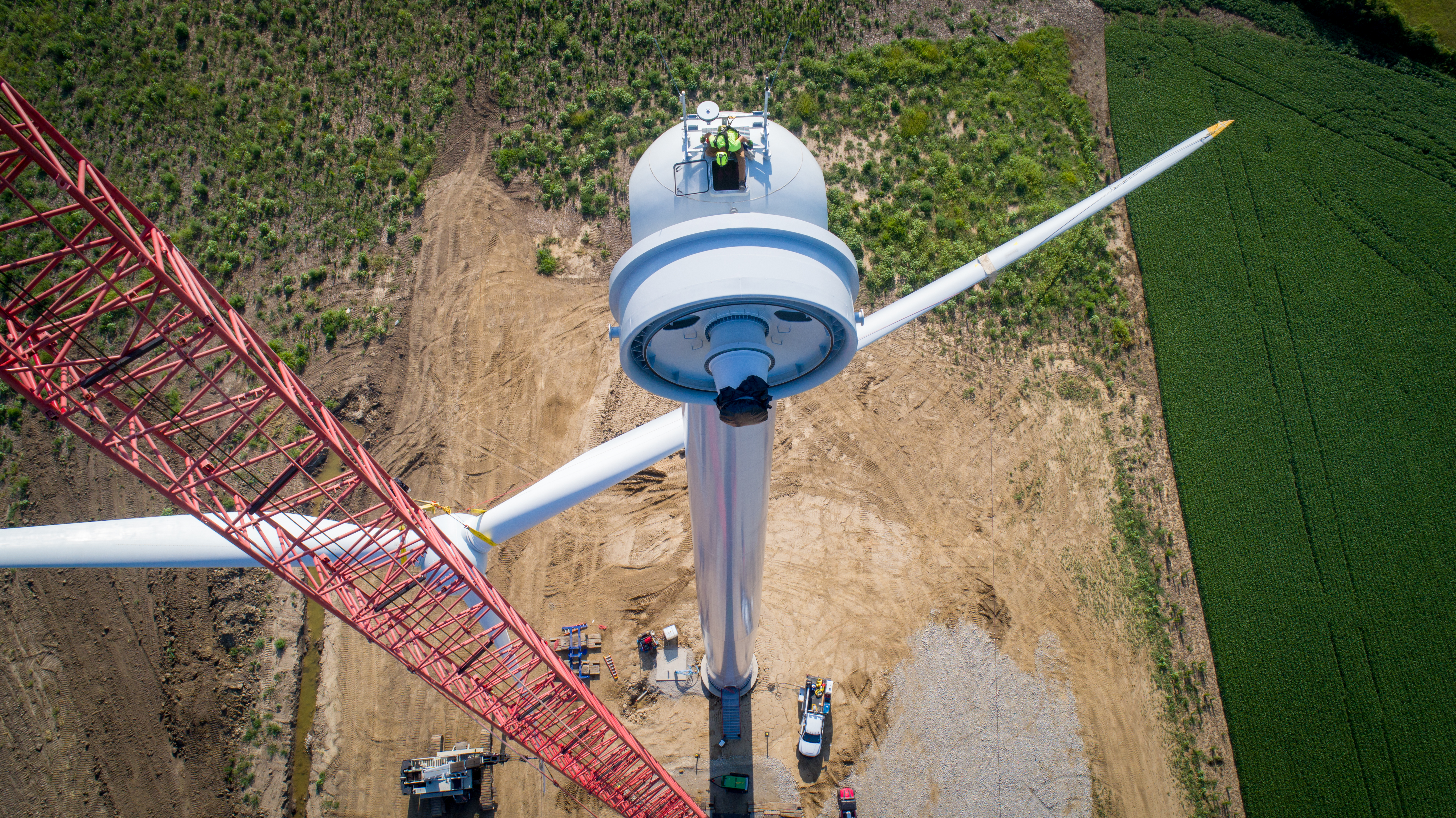

In this week’s Wind Study, you get to play the role of wind turbine manufacturer!
When planning a Wind for Industry project, One Energy tells the customer how much of their facility’s power will likely be produced by the wind turbines we install at their location. To do this, we use what’s called the turbine power curve. Power curves are governed by the design of the turbine and are provided by its manufacturer.
As the manufacturer of this fictional wind turbine, we need YOU to plot the power curve on the graph provided in today’s homework. Then use the accompanying equation to calculate the power produced at a given wind speed.
🔗 Download the homework questions here.
And check back Friday to download the answers and see if you’re cut out to manufacture wind turbines!
You can also find this educational series on Facebook and Twitter.
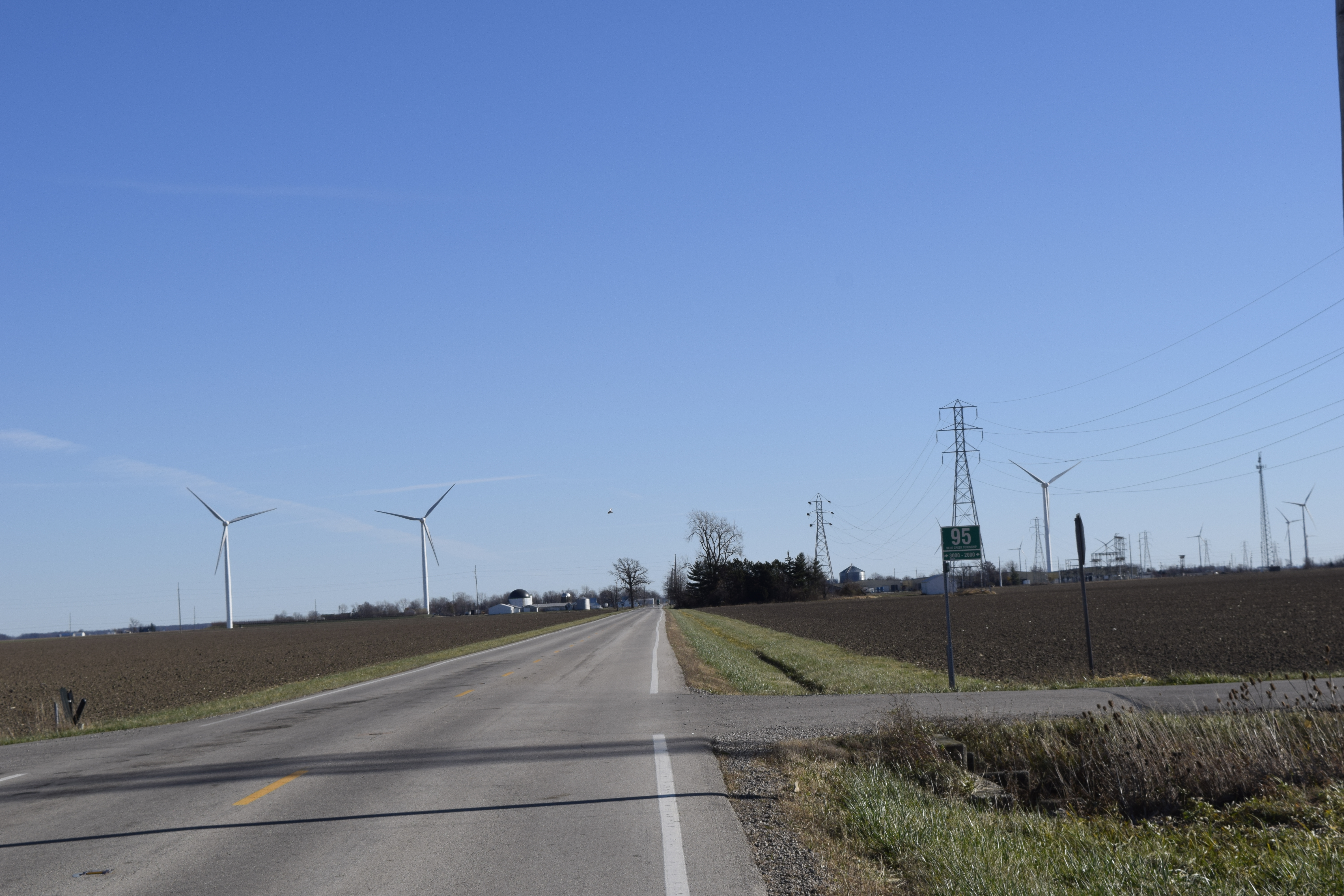

In today’s Wind Energy Fact, find out how many bolts it takes to build a 1.5 MW utility-scale wind turbine!
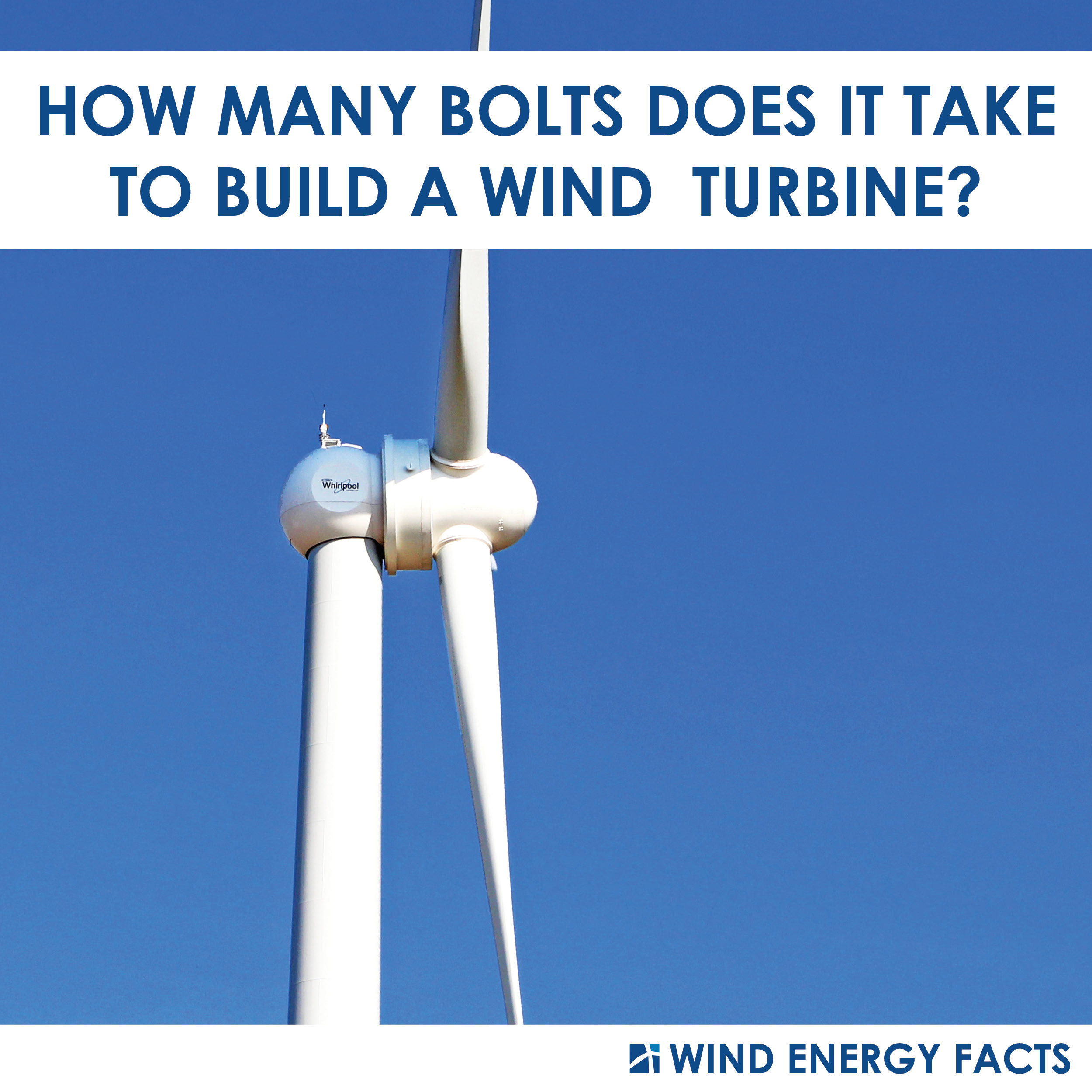
At One Energy, we connect the base section of the tower to the foundation using 120 anchor bolts.

The next three tower sections (lower mid, upper mid, and top) are stacked on top of the base, connected by 358 bolts in total.

After the tower is completely constructed, we install the nacelle using 76 more bolts.

The generator then requires 48 bolts to connect to the nacelle.

Before flying the rotor, we build it on the ground using 54 bolts on each of the three blades, connecting them to the hub – a total of 162 bolts.

Finally, when the rotor is flown, the entire assembly is attached to the generator using 48 bolts.

Altogether, it takes a total of 812 bolts to build a 1.5 MW wind turbine!
Think that’s pretty cool? Share it on Facebook, LinkedIn, Instagram, and Twitter!

This week, we asked for your help in determining a Wind for Industry project’s estimated energy production.
After having calculated the Net AEP (Annual Energy Production) by considering a project’s wake loss earlier this month (Wind Study Question 2), we asked you on Monday to use P-Values and scale factors to help us account for other potential losses and uncertainties, like turbine downtime due to maintenance or grid issues.
If you missed Monday’s questions, you can find them here, and  download the answers here to check your work!
download the answers here to check your work!
You can also find this educational series on Facebook and Twitter.
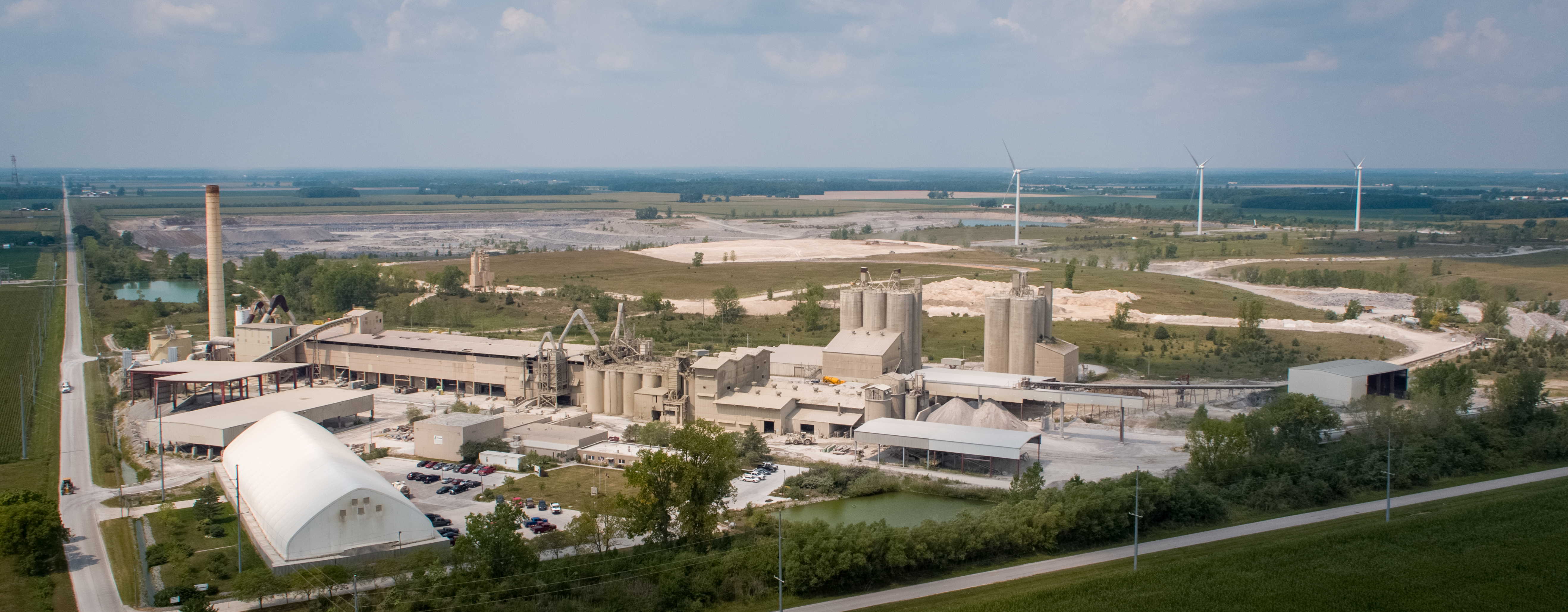

When I tell people I have a master’s degree in meteorology, the initial conversation goes one of two ways: they tell me they love the movie Twister and wanted to be a meteorologist when they were a kid, or they ask me what it’s like to get to be wrong half the time and still get paid. Good joke buddy, I’ve never heard that one before.
I usually get the tongue-in-cheek jokes from those people who don’t understand the concept of weather forecasting and the main priorities of a meteorologist. A local TV meteorologist has a large viewing area to forecast for, sometimes with millions of people that count on that information. It would be impossible for them to create a custom spot forecast for every single viewer. The most important responsibility any meteorologist has is to ensure the safety of our citizens. Shoveling two less inches of snow is not as imperative as alerting an emergency manager of impending snowfall so they are able to deploy the salt trucks and snowplows so roadway travel can continue safely. Whether it’s forecasting snowfall, high winds, tornadoes, or hurricanes, meteorologists are constantly looking for indicators that could mean potential for loss of life. Forecasts are getting better every day. Meteorologists are far better today at predicting the 10-day forecast than they were 60 years ago, and 60 years from now they’ll be even better. Today, the 5-day forecast can predict the weather accurately upwards of 90% of the time.
In just a few days it will be February 2nd, otherwise known in the United States as Groundhog Day. If you aren’t familiar with this day, it is when a large number of grown adults in tuxedos and top hats gather in Punxsutawney, Pennsylvania to obtain the weather forecast for the next 6 weeks from a well-fed groundhog named Phil. If Phil emerges from his burrow and sees his shadow with clear skies overhead, it means he has forecasted 6 more weeks of winter. If he does not see his shadow, then a celebration commences, because he has forecasted an early spring.
Don’t get me wrong, I love this tradition. For those of us in the Midwest who must live through cold, cloudy winters, it offers the slightest bit of hope (even if it is coming from a groundhog). I do however find it wildly fascinating the number of people in this country who take the word of a rodent over the word of their highly educated local meteorologist. For the record, Phil’s accuracy record is an abysmal 36%, less than that of flipping a coin.
Now, while I may not practice as a weather forecaster, I do use my atmospheric science background extensively to forecast the long-term wind resource for One Energy’s Wind for Industry projects. Project financials rest on my team’s ability to correctly predict the lifetime energy production of our wind turbines, which is directly related to the wind and large-scale weather patterns. We take this responsibility seriously and take great pride in our accuracy. But yes, sometimes, we are slightly wrong. That is important to admit. Predicting the future is hard. Analyzing how wrong we were, and for what reasons, allows us to make our models that much better. That’s how all science should work – continuously validating and updating facts and models with the newest information and always improving upon previous hypotheses and methods.
Science and meteorology are always evolving, and weather forecasts continue to improve tremendously over time. And traditions like Groundhog Day continue to capture the hearts of communities. I just long for the day when meteorologists’ forecasts are anticipated and admired as much as Phil’s is (…with or without the top hats).
Anyways, here’s hoping Punxsutawney Phil’s shadow stays home on Tuesday!
Jessica Grosso is the Head of Project Planning and Technology at One Energy.



